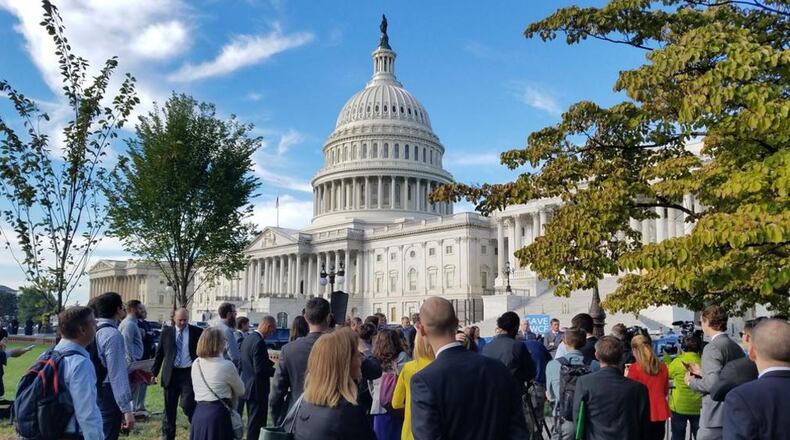While President Donald Trump said this week that disaster aid efforts in Puerto Rico for Hurricane Maria were "throwing our budget a little of whack," the reality is that the relief numbers are quickly growing overall as the feds help deliver aid to those hit hurricanes Harvey, Irma, and Maria, with Tropical Storm Nate now possibly ready to take aim at the Gulf Coast in coming days as well.
The White House on Wednesday sent Congress a $29 billion request for extra disaster relief funds, which GOP leaders say will be voted on in the House next week, as the Trump Administration acknowledged the cost is not small change.
"The Federal Government alone is obligating close to $200 million per day for recovery activities," White House budget chief Mick Mulvaney wrote in a letter to Congressional leaders, as he asked for almost $13 billion to go into FEMA's Disaster Relief Fund.
But even as that was landing in the lap of lawmakers, leading elected officials in Texas asked the Congress to add in another $18.7 billion - just to deal with the damage from Hurricane Harvey in the Lone Star State.
Credit: Jamie Dupree
Credit: Jamie Dupree
"Texas greatly appreciates the appropriations committees’ efforts to swiftly provide funds," the Governor, both Senators and most lawmakers from the Texas Congressional delegation wrote in a joint letter.
“However, in light of the unprecedented damage from Hurricane Harvey and the historically epochal flooding of Houston, Beaumont and surrounding regions, we all recognize that the funding already appropriated is a small fraction of the federal resources needed to help rebuild Texas and reinvigorate the American economy," they added.
The Texas-specific disaster aid request is for:
+ $10 billion to repair and rehab U.S. Army Corps of Engineers water projects, and damage to ports in the Lone Star State.
+ $7 billion for Community Development Block Grants, though the letter noted that Texas really needs "over $40 billion" in those funds.
+ $800 million in emergency aid to educational institutions.
+ $450 million in small business disaster loans.
+ $300 million in Economic Development Administration grants.
+ $150 million in money to help repair damaged infrastructure.
While the almost $19 billion request from the state of Texas might seem to be a lot of money, Governor Greg Abbott said a month ago that he felt his state would need more than $100 billion in aid from Uncle Sam.
While Republicans pressed the need for offsetting budget cuts to pay for disaster relief after Hurricane Sandy hit New Jersey in 2012, no such plans have been put forward this year by either the Trump Administration or GOP lawmakers in Congress.
That means - and this has been standard procedure for disaster aid - that the final tab is simply added to the federal deficit.
White House officials have made clear that the $29 billion request - which could be changed by the Congress - probably won't be the last in 2017.
"It can take up to 90 days after a major hurricane to finalize recovery cost estimates, and the Administration is committed to properly quantifying the costs of the necessary permanent repair work as quickly as possible," the White House budget chief wrote.
As for the aftermath of Maria, Vice President Mike Pence will be in Puerto Rico on Friday to review disaster relief efforts there.
Pence told an audience in Florida on Thursday evening that the Trump Administration will do all it can to help those hit by Hurricane Maria.
"Our message will be simple, we are with you, we stand with you and we will be with you every step of the way," Pence said.
"This will be a long process, and this next round of funds certainly won’t be all that is needed," said Rep. Rodney Frelinghuysen (R-NJ), the Chairman of the House Appropriations Committee.
And that will cost billions as well.
About the Author



